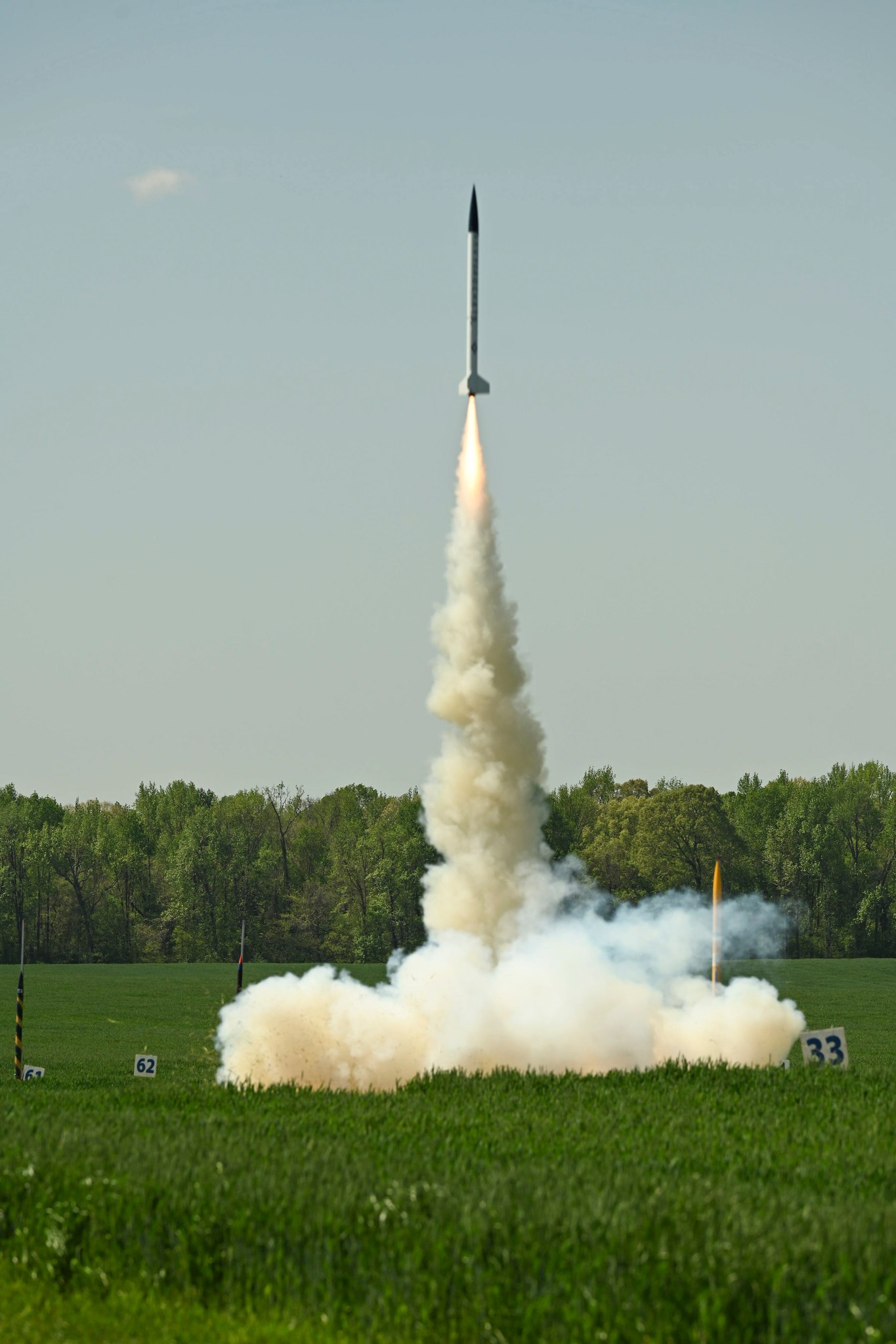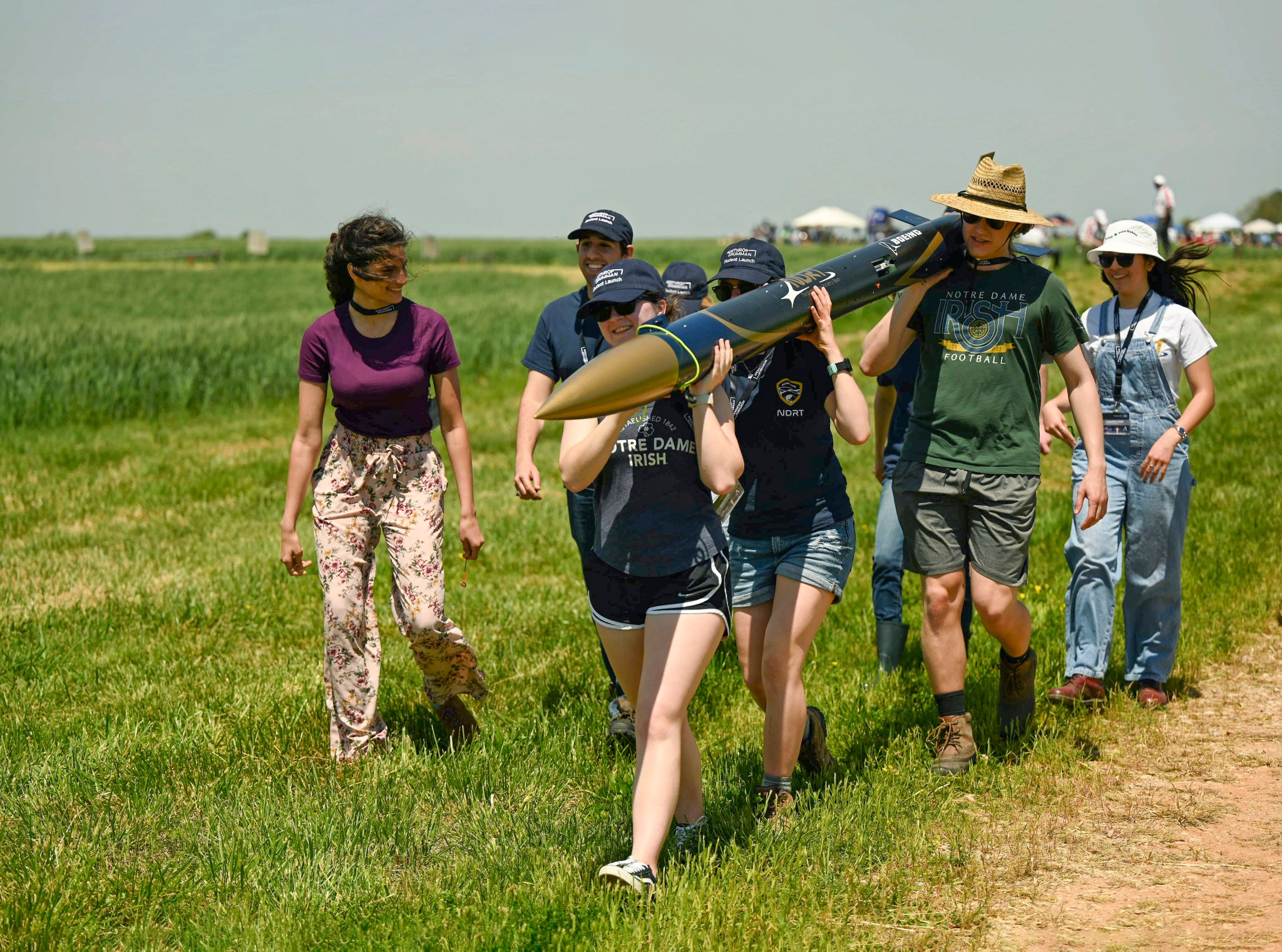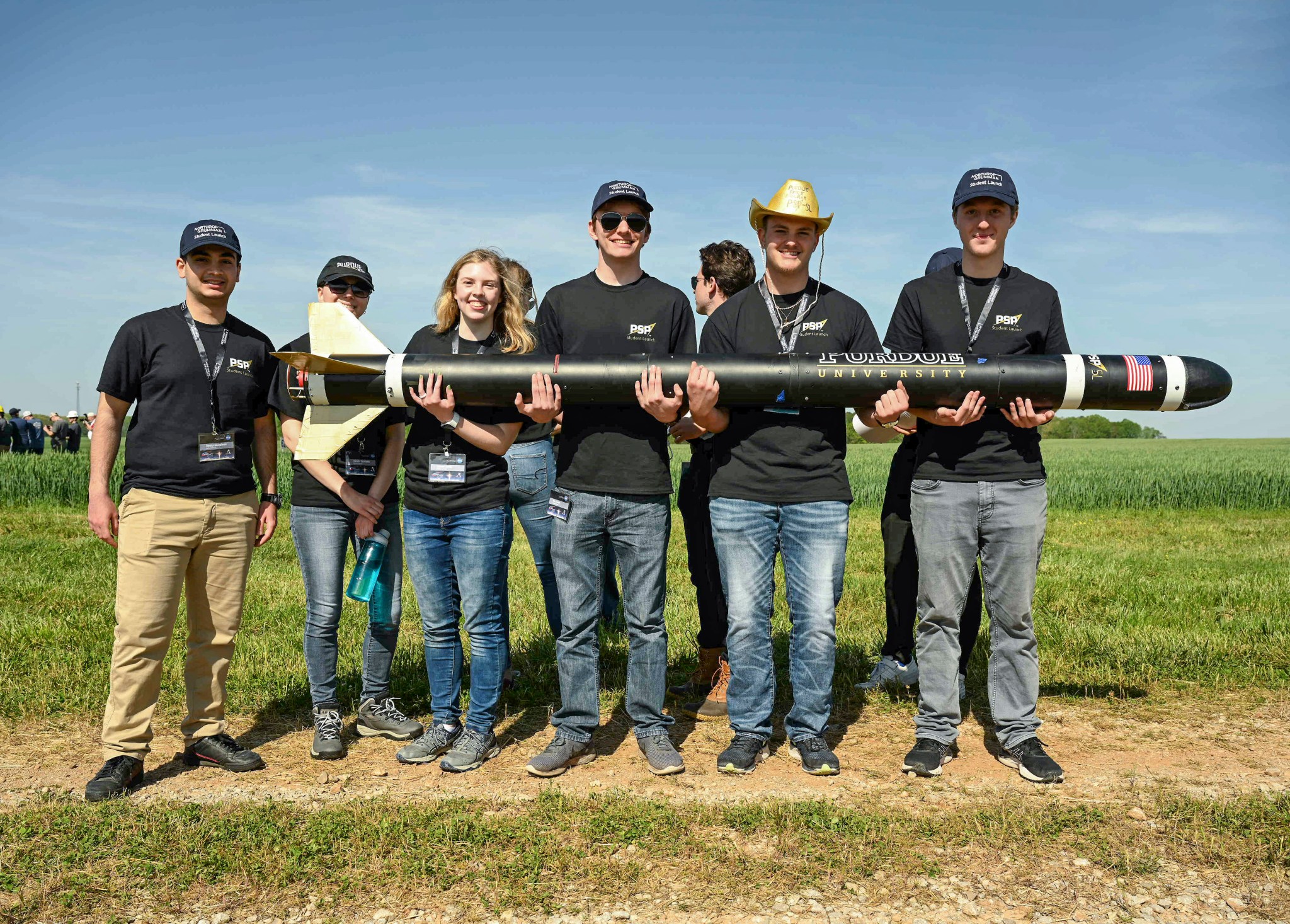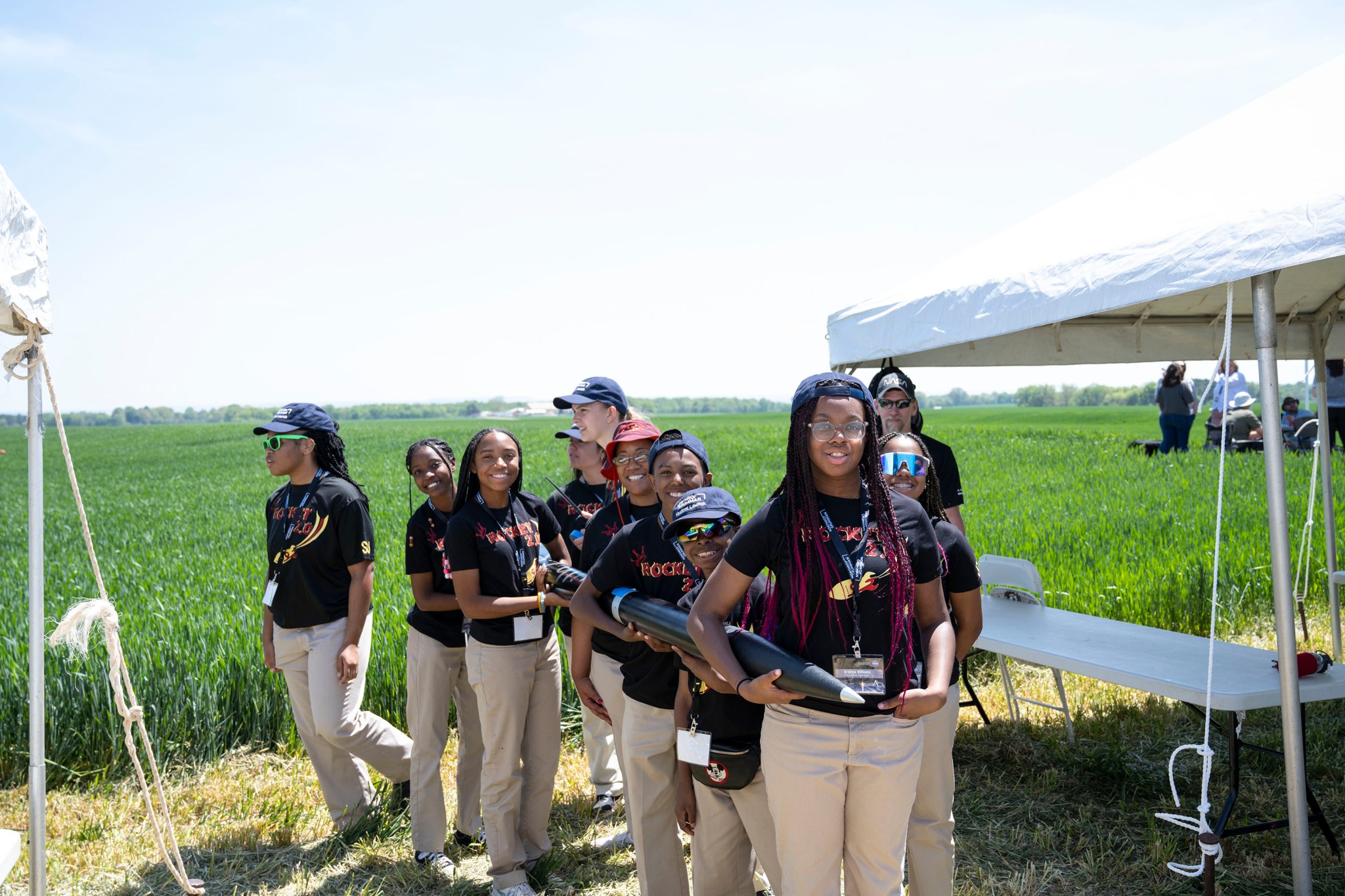NASA’s Student Launch teams capped another year of mile-high rocket launches with a virtual awards ceremony June 2. Teams earn points for progress and successes during the nine-month competition, and the team with the most points wins. Awards were also presented in multiple categories.
2022 Overall Winners
Launch Division
- University of North Carolina at Charlotte
- University of Notre Dame, Notre Dame, Indiana
- Vanderbilt University, Nashville, Tennessee
- University of Florida, Gainesville
- Purdue University, West Lafayette, Indiana
Design Division
- Tarleton State University, Stephenville, Texas
- New York University
2022 Category Award Winners
AIAA Rookie Award, presented to the top rookie team on the college and university level:
- First place: James Madison University, Harrisonburg, Virginia
- Second place: Cedarville University, Cedarville, Ohio
- Third place: Central Washington University, Ellensburg, Washington
Judges’ Choice Award (middle/high school level), presented to the middle or high school team that a panel of judges determined has the most creative payload, best design, and workmanship of its rocket.
- First place: Cedar Falls High School, Cedar Falls, Iowa
- Second place: Plantation High School, Plantation, Florida
- Third place: St. Vincent-St. Mary High School, Akron, Ohio
AIAA Vehicle Design Award (design division), presented to the team with the most creative, innovative, and safety-conscious overall rocket design:
- First place: New York University
Experiment Design Award (design division), presented to the team with the most creative and innovative payload design while maximizing safety and science value:
- First place: Tarleton State University, Stephenville, Texas
AIAA Launch Division Payload Design Award, presented to the team with the most creative and innovative payload design while maximizing safety and science value:
- First place: University of North Carolina at Charlotte
- Second place: North Carolina State University, Raleigh
- Third place: University of Florida, Gainesville
Safety Award (college level, any division), presented to the team that most successfully maximized safety and science value in its design:
- First place: University of Notre Dame, Notre Dame, Indiana
Project Review Award (design division), presented to the team with the best combination of written reviews and formal presentations:
- First place: New York University
Project Review Award (launch division), presented to the team with the best combination of written reviews and formal presentations:
- First place: Vanderbilt University, Nashville, Tennessee
- Second place: University of North Carolina at Charlotte
- Third place: California State Polytechnic Institute, Pomona
AIAA Reusable Launch Vehicle Award (launch division), presented to the team with the most creative, innovative, and well-constructed overall design while still maximizing safety and efficiency:
- First place: Purdue University, West Lafayette, Indiana
- Second place: Cedarville University, Cedarville, Ohio
- Third place: California State University, Long Beach
STEM Engagement Award, presented to the team that best informed others about rocketry and other space-related topics:
College Level (any division):
- First place: California State University, Long Beach
- Second place: Auburn University, Auburn, Alabama
- Third place: Purdue University, West Lafayette, Indiana
Middle/High School Level:
- First place: WISE Camps, Bellevue, Washington
- Second place: Madison West High School, Madison, Wisconsin
- Third place: Cedar Falls High School, Cedar Falls, Iowa
Altitude Award, presented to the team that comes closest to its declared target altitude as recorded in their Flight Readiness Review:
College Level (launch division):
- First place: University of North Carolina at Charlotte
- Second place: Iowa State University, Ames
- Third place: University of Alabama in Huntsville
Middle/High School Level:
- First place: Camas High School, Camas, Washington
- Second place: St. Vincent-St. Mary High School, Akron, Ohio
- Third place: Webster City High School, Webster City, Iowa
3D Printing Award, presented to the student team with the best consideration, design, and implementation in regard to 3D printing of rocket and payload:
College Level (any division)
- First place: Purdue University, West Lafayette, Indiana
- Second place: Auburn University, Auburn, Alabama
- Third place: University of North Dakota, Grand Forks
Middle/High School Level
- First place: Madison West High School, Madison, Wisconsin
- Second place: AIAA Orange County Section, Irvine, California
- Third place: Cedar Falls High School, Cedar Falls, Iowa
Social Media Award, presented to the student team that has the most active and creative social media presence throughout the project year:
College Level (any division)
- First place: North Carolina State University, Raleigh
- Second place: Iowa State University, Ames
- Third place: Purdue University, West Lafayette, Indiana
Middle/High School Level
- First place: Webster City High School, Webster City, Iowa
- Second place: Cedar Falls High School, Cedar Falls, Iowa
- Third place: Portland Rocketry, Portland, Oregon
Best-Looking Rocket Award, presented to the team that is judged by their peers to have had the best-looking rocket:
College Level, any division
- First place: North Carolina State University, Raleigh
- Second place: University of North Carolina at Charlotte
- Third place: Iowa State University, Ames
Middle/High School Level:
- First place: Cedar Falls High School, Cedar Falls, Iowa
- Second place: Yamhill Carlton High School, Yamhill, Oregon
- Third place: Webster City High School, Webster City, Iowa
Team Spirit Award, presented to the student team that is judged by its peers to have had the best team spirit
College Level (any division):
- First place: Lipscomb University, Nashville, Tennessee
- Second place: North Carolina State University, Raleigh
- Third place: Auburn University, Auburn, Alabama
Middle/High School Level:
- First place: American Youth Soccer Organization Region 174, Granada Hills, California
- Second place: Mathmania Robotics, Mission Viejo, California
About Student Launch
Each year, NASA challenges middle school, high school, college, and university students from across the United States to design, build, and launch a high-powered amateur rocket, fly it to an altitude between 4,000 and 6,000 feet, and make a successful landing. NASA’s Marshall Space Flight Center in Huntsville, Alabama, hosts the event.
For more on NASA’s Student Launch, visit here.
About Artemis Student Challenges
NASA’s Artemis Student Challenge stimulate innovation and advance NASA’s human exploration mission through collaboration with educational institutions and students – the Artemis Generation, who will help NASA explore the Moon and Mars.
For more on NASA’s Artemis Student Challenges, visit here.
For more information on this announcement, view the news release here.
Christopher Blair
NASA’s Marshall Space Flight Center, Huntsville, Ala.
256-544-0034
christopher.e.blair@nasa.gov




























